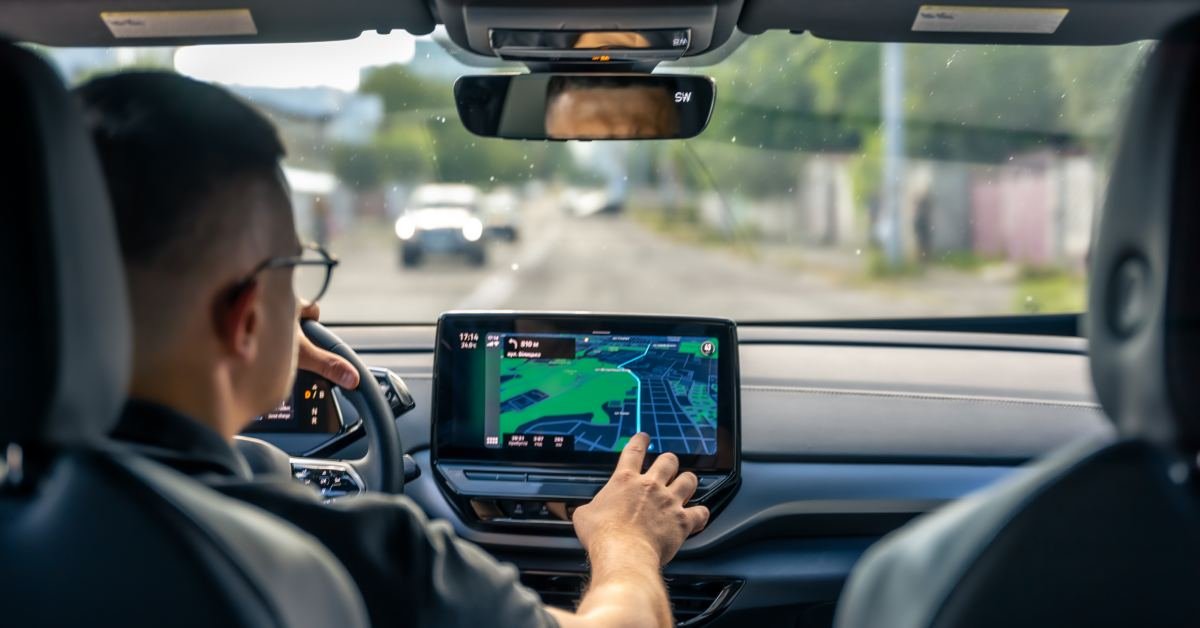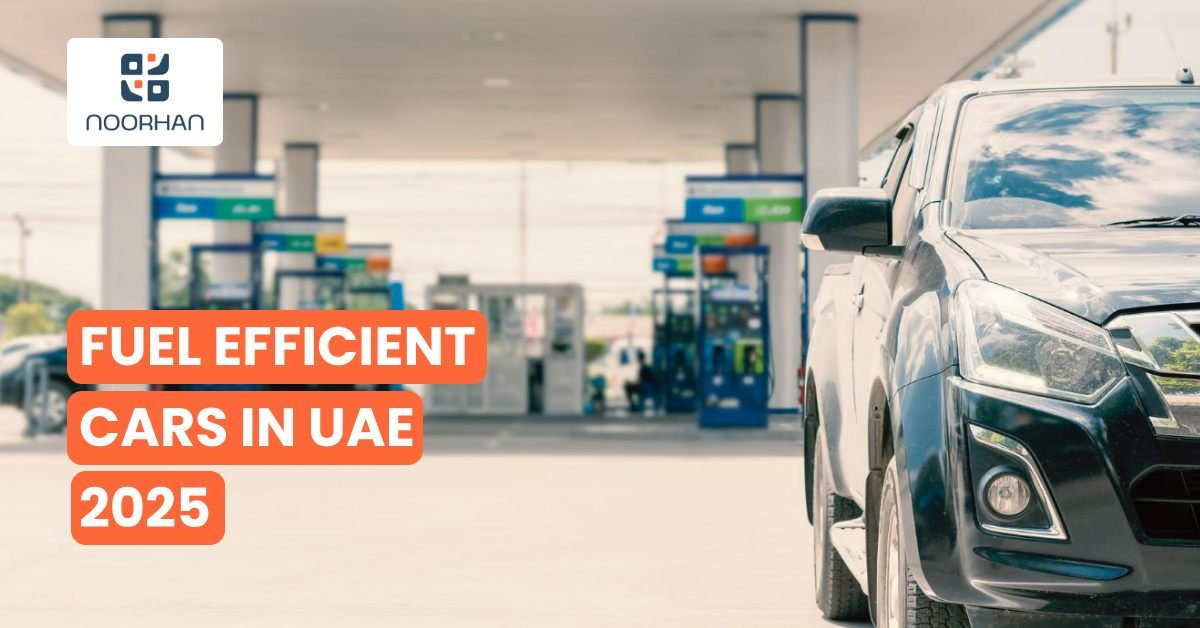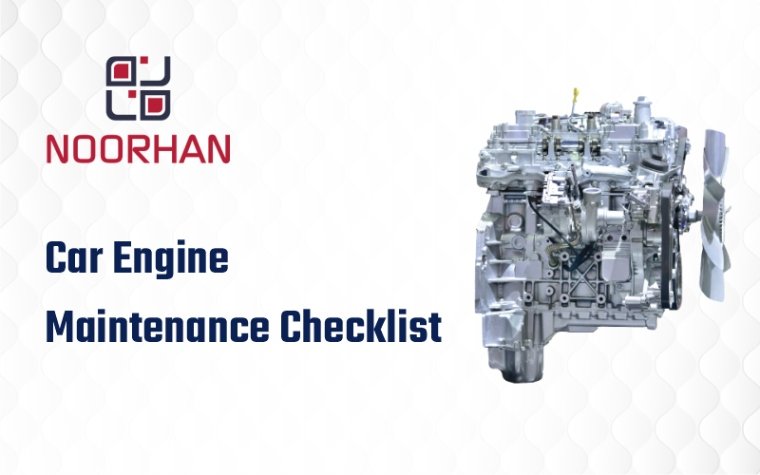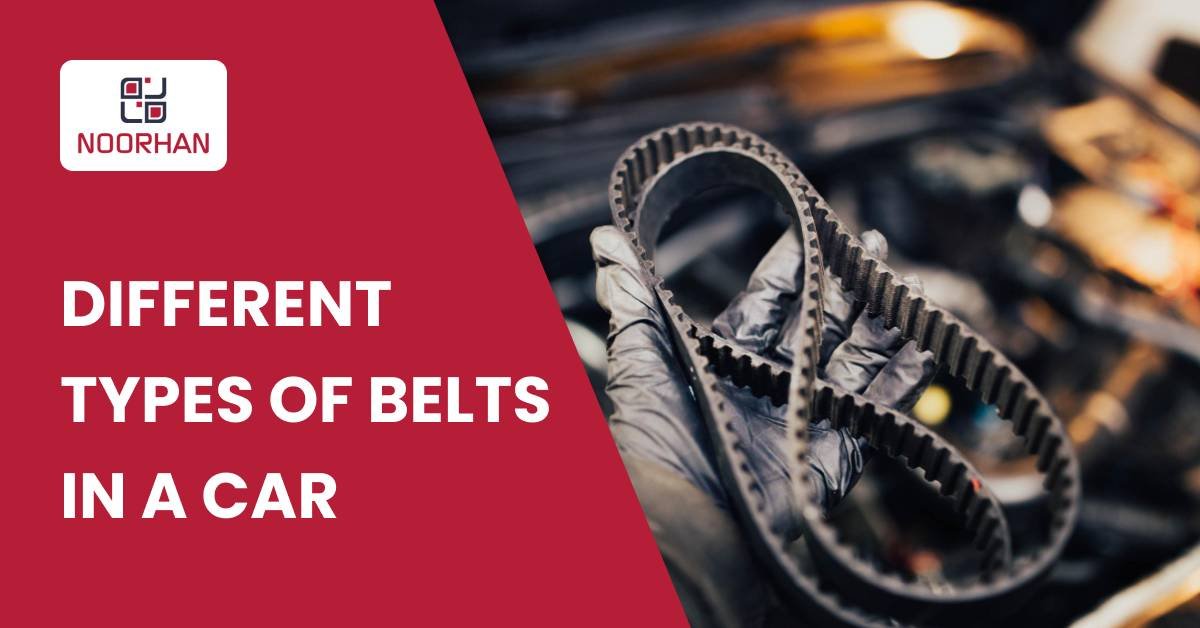-
Understanding SAE Automation LevelsUnderstanding SAE Automation Levels
-
Core Level 2 ADAS FeaturesCore Level 2 ADAS Features
-
Vehicles with Level 2 ADASVehicles with Level 2 ADAS
-
Benefits of Level 2 ADASBenefits of Level 2 ADAS
-
Limitations and Proper UsageLimitations and Proper Usage
-
FAQsFAQs
Car buyers in UAE showrooms often hear salespeople mention Level 2 ADAS with various brand names like Honda Sensing, Toyota Safety Sense, or Mercedes-Benz DISTRONIC. Most buyers nod politely but have no clear understanding of what these systems actually do or whether the price difference between trim levels makes sense. This gap in knowledge leads to poor purchase decisions and misunderstanding of how to use these features safely.
Level 2 ADAS features represent partial automation where the vehicle controls both steering and speed simultaneously under certain conditions while requiring constant driver supervision. The Society of Automotive Engineers defines this as systems handling lateral and longitudinal vehicle control together. This differs from Level 1 where systems control only steering OR speed separately. Common Level 2 features include Adaptive Cruise Control paired with Lane Keeping Assist, Traffic Jam Assist for stop-and-go situations, and Automatic Emergency Braking responding to obstacles.
For UAE car buyers, understanding Level 2 ADAS features matters because these systems now appear across price ranges from budget sedans to luxury vehicles. The technology reduces driver fatigue on long Sharjah to Dubai commutes, prevents lane departure on multi-lane Sheikh Zayed Road, and eases stop-and-go traffic around Business Bay during morning rush hours.
Ready to experience these features firsthand?
Schedule a test drive with our specialists to compare Level 2 ADAS systems across different vehicle models and find the perfect match for your UAE driving needs.
Understanding SAE Automation Levels
The Six Levels Defined by SAE International
The Society of Automotive Engineers established the J3016 standard defining six levels of driving automation from Level 0 through Level 5. This classification system helps buyers understand exactly what their vehicle can and cannot do, preventing dangerous misunderstandings about system capabilities. The United States Department of Transportation adopted these standards, making them the global reference for automation discussions.
Level 0 No Driving Automation
Level 0 represents no driving automation where the human driver performs all driving tasks even when warning or intervention systems provide alerts. Basic cruise control, blind spot warnings, and lane departure warnings fall into Level 0 because they only provide information without controlling the vehicle. The driver maintains complete responsibility for steering, braking, accelerating, and monitoring the environment.
Level 1 Driver Assistance
Level 1 brings driver assistance where automated systems control either steering OR speed but not both simultaneously. Adaptive cruise control alone represents Level 1 when it maintains speed and distance without steering assistance. Lane keeping assist that steers the vehicle back into lanes without speed control qualifies as Level 1. The driver must monitor the system continuously and handle whichever function the system does not control.
Level 2 Partial Automation
Level 2 marks partial automation where systems control both steering AND speed together under certain conditions. This dual control represents the critical distinction from Level 1. When adaptive cruise control and lane centering work simultaneously, the combination creates Level 2 automation. The driver must remain fully attentive, hands on or near the steering wheel, and ready to take control instantly. Most current UAE vehicles with driver assistance systems fall into Level 2.
Level 3 Conditional Automation
Level 3 introduces conditional automation where the system handles all driving tasks in certain scenarios but requires the driver ready to intervene when requested. Mercedes-Benz Drive Pilot represents the rare Level 3 system operating only on certain German highways under particular conditions. The driver can disengage from active driving but must respond when the system requests takeover. No Level 3 systems currently operate in UAE markets.
Levels 4 and 5 High and Full Automation
Levels 4 and 5 represent high and full automation where systems handle complete driving without human intervention. Level 4 limits operations to certain environments while Level 5 operates everywhere under all conditions. These levels remain developmental with no consumer vehicles offering genuine Level 4 or 5 capabilities as of 2025. Despite marketing claims, no production vehicle achieves true Level 4 autonomous operation.
Why Level 2 Dominates Current Markets
Level 2 ADAS appears in most new vehicles sold in UAE during 2025 because it provides meaningful driver assistance without the technical and regulatory complexities of higher automation levels. The technology uses existing sensors including cameras, radar, and ultrasonic devices already present for parking and safety functions. Manufacturers integrate these sensors with more processing creating Level 2 capabilities at reasonable costs.
The jump from Level 2 to Level 3 requires dramatic technological advancement because responsibility shifts from driver to system for environment monitoring. Level 3 systems must achieve much higher reliability since drivers can disengage from active supervision.
Consumer acceptance favors Level 2 systems because drivers maintain control while receiving assistance. Many drivers feel uncomfortable fully disengaging from driving, making Level 2’s hands-on approach psychologically acceptable. The gradual introduction helps buyers adapt to automation without the jarring transition to full system control required at Level 3 and above.
Core Level 2 ADAS Features Explained
Adaptive Cruise Control with Stop-and-Go
Adaptive Cruise Control represents the foundation of Level 2 systems, maintaining set speeds while adjusting automatically to traffic ahead. Unlike basic cruise control requiring manual braking and acceleration when traffic changes, ACC uses radar or camera sensors detecting vehicles ahead and modifying speed automatically. The system measures distance to leading vehicles, slowing when they slow and accelerating when they speed up within set parameters.
How Stop-and-Go Functionality Works
Stop-and-go capability extends ACC functionality to complete vehicle stops in traffic, then automatic resumption when traffic moves. This feature proves valuable in Dubai’s Business Bay morning congestion or afternoon backups along Sheikh Zayed Road near Mall of the Emirates. The system brings the vehicle to complete stops, holds the brakes, then accelerates when leading traffic moves forward. This eliminates the physical effort of constant brake and accelerator pedal use.
Speed Range Variations Across Manufacturers
Speed range varies by manufacturer with some systems operating from 0 to 210 km/h covering all driving scenarios. Budget implementations may require speeds above 30 km/h for activation, limiting usefulness in slow traffic. UAE buyers should verify the speed range during test drives, experiencing both highway performance and low-speed stop-and-go capabilities matching their commute patterns.
Following Distance Settings and Adjustments
Following distance settings offer 3 to 5 adjustable levels allowing drivers to select closer or more distant spacing from leading vehicles. Conservative settings maintain larger gaps suitable for highway driving. Tighter settings work for urban traffic where excessive spacing invites lane-cutting by other drivers. Learning these adjustments helps improve system behavior for different road conditions.
Lane Keeping Assist and Lane Centering
Lane Keeping Assist monitors lane markings through forward-facing cameras, providing steering corrections when the vehicle drifts toward lane boundaries without turn signals activated. The system applies gentle steering inputs bringing the vehicle back toward lane center. This passive intervention prevents gradual drift common during driver inattention or fatigue on long highway stretches including Emirates Road or the Dubai to Abu Dhabi highway.
Difference Between Lane Keeping and Lane Centering
Lane Centering Assist actively maintains the vehicle’s position in the lane center through continuous subtle steering adjustments rather than waiting for boundary crossings. This represents more control than basic lane keeping, essential for Level 2 classification when combined with speed control. The constant small corrections keep vehicles tracking straight within lanes. This reduces the steering effort required from drivers during highway cruising.
Camera System Limitations in UAE Conditions
Camera limitations affect performance when lane markings fade, road construction removes markings, or intense sunlight creates glare affecting camera sensors. UAE roads maintain good lane marking condition. However, construction zones around Business Bay, Dubai Marina, and new developments may challenge systems. Drivers must remain ready to take control when systems disengage due to poor marking visibility.
Traffic Jam Assist for Stop-and-Go Conditions
Traffic Jam Assist combines low-speed ACC with lane centering for congested conditions below 60 km/h. The system handles all steering, braking, and acceleration in slow-moving traffic queues. This makes morning commutes from Sharjah or northern emirates into Dubai less exhausting. During evening exodus from Business Bay or DIFC, the system manages the frustrating stop-and-go crawl reducing physical and mental fatigue.
Benefits During Dubai Rush Hour Traffic
The technology helps during commutes that UAE residents working in Dubai business districts face daily. The system eliminates hundreds of individual brake and accelerator applications that would occur during manual driving in heavy traffic. This reduction in repetitive actions matters most during summer months when air conditioning loads and exterior heat already stress drivers.
Hands-On-Wheel Monitoring Systems
Hands-on-wheel requirements persist even during Traffic Jam Assist operation. Systems include steering wheel sensors detecting whether drivers maintain contact. They issue warnings and eventually disengage if no steering input occurs for 10 to 15 seconds. This safety requirement ensures driver readiness to intervene if the system encounters situations beyond its handling capabilities.
Speed Threshold Differences Between Systems
Speed thresholds vary with some systems operating only below 40 km/h while others function up to 60 km/h. The upper limit determines whether Traffic Jam Assist helps only in parking lot speed congestion or also with moderate traffic flow. Higher thresholds provide more utility across varying traffic conditions common on Sheikh Zayed Road where speeds fluctuate between complete stops and 50 km/h crawls during peak hours.
Automatic Emergency Braking
Automatic Emergency Braking detects imminent collisions through radar and camera sensors, applying maximum braking force if drivers fail responding to danger. The system operates independently from ACC, working even when cruise control remains off. AEB represents critical safety technology preventing rear-end collisions when drivers become distracted by phone notifications, conversation, or the numerous digital billboards along UAE highways.
How AEB Sensors Detect Collision Threats
Forward-facing sensors continuously monitor the road ahead detecting vehicles, pedestrians, cyclists, and stationary objects. When the system calculates that collision will occur without intervention, it first provides audio and visual warnings giving drivers opportunity to brake. If drivers don’t respond within milliseconds, AEB applies full braking force attempting to prevent impact or reduce collision speed minimizing injury.
Effective Speed Ranges for AEB Systems
Speed ranges extend from 0 to 80 km/h with systems more reliable at moderate speeds where stopping distances remain manageable. Highway speed effectiveness varies by manufacturer with some systems claiming protection up to 210 km/h though physics limits achievable protection at high speeds. The technology works best preventing low and moderate speed rear-end collisions, the most common accident type in urban traffic.
False Activation Scenarios and Prevention
False activations occur when systems misinterpret shadows, roadway debris, or overhead signs as obstacles. While rare in quality implementations, unexpected automatic braking creates potential dangers if following traffic cannot react quickly. Modern systems achieve very low false positive rates. Buyers should research model reliability through owner forums and reviews before purchase.
Blind Spot Detection and Rear Cross Traffic Alert
Blind Spot Detection monitors adjacent lanes through rear-facing radar sensors, alerting drivers when vehicles occupy blind spots invisible in side mirrors. Visual indicators appear in mirror housings or A-pillar displays, activating when vehicles enter monitored zones. If drivers activate turn signals while vehicles occupy blind spots, the system provides enhanced warnings through flashing lights, audible alerts, or haptic steering wheel feedback.
Multi-Lane Highway Applications
Multi-lane highways including Sheikh Zayed Road’s six-lane sections and Emirates Road make blind spot monitoring valuable. The high traffic volumes and frequent lane changes create numerous situations where vehicles hide in blind spots. The additional awareness prevents dangerous side-swipe collisions during lane changes. This proves valuable for larger vehicles including SUVs and trucks with more extensive blind zones.
Rear Cross Traffic Alert Parking Benefits
Rear Cross Traffic Alert uses the same rear radar sensors detecting vehicles approaching from sides when reversing from parking spaces. The system proves invaluable in crowded parking structures at Dubai Mall, Mall of the Emirates, and Business Bay office towers where perpendicular traffic remains invisible until emerging from behind adjacent vehicles. Audio and visual warnings alert drivers to stop, preventing backing collisions.
Popular UAE Vehicles with Level 2 ADAS
Budget-Friendly Options Under AED 100,000
The MG Astor leads affordable Level 2 ADAS offerings in UAE markets. The Chinese brand includes adaptive cruise control, lane keep assist, blind spot detection, and automatic emergency braking as standard equipment across trim levels. This represents the lowest entry point for driver assistance systems, making Level 2 technology accessible to budget-conscious buyers.
MG Astor ADAS Features
The MG Astor provides comprehensive safety technology at entry-level pricing. The system includes adaptive cruise control, lane keep assist, blind spot detection, and automatic emergency braking as standard equipment. This makes Level 2 technology accessible to first-time buyers and families upgrading from older vehicles.
Honda Civic with Honda Sensing
Honda Civic 2025 equipped with Honda Sensing provides proven reliability. The system includes adaptive cruise control with low-speed follow, lane keeping assist, collision mitigation braking, and road departure mitigation. Honda’s reputation for dependability extends to their ADAS implementation, with systems refined through years of development across global markets.
Mazda 3 i-ACTIVSENSE Technology
Mazda 3 2025 offers i-ACTIVSENSE technology, providing adaptive cruise control, lane keep assist, and traffic sign recognition. The compact sedan appeals to buyers wanting Japanese quality with modern safety features at accessible pricing. The system works reliably in UAE conditions, maintaining performance during summer heat and dust conditions.
Mid-Range Choices AED 100,000 to AED 250,000
These mid-range options balance capability and cost, providing Level 2 implementations without luxury vehicle pricing. The systems include features approaching luxury performance while maintaining accessibility for middle-income buyers. Insurance and maintenance costs remain reasonable compared to luxury alternatives.
Nissan Altima ProPILOT Assist
Nissan Altima 2025 with ProPILOT Assist offers steering assist, intelligent cruise control, and driver assistance. The system handles highway driving smoothly, making it suitable for commuters traveling between emirates daily. Nissan’s focus on user-friendly interfaces helps drivers quickly adapt to system operation.
Toyota Land Cruiser Safety Sense
Toyota Land Cruiser 2025 includes Toyota Safety Sense with adaptive cruise control, lane departure alert, and pre-collision system with pedestrian detection. The system suits UAE conditions given Land Cruiser’s popularity for family transport and desert excursions. The reliability extends to ADAS functions, maintaining performance across varied driving environments.
Hyundai Ioniq 5 Highway Driving Assist
Hyundai Ioniq 5 represents electric vehicle option with Highway Driving Assist. The system combines adaptive cruise control, lane keeping, and highway driving assist tuned for extended cruising. The EV platform provides quiet operation enhancing the relaxed driving experience enabled by Level 2 systems on long journeys.
Luxury Options Above AED 250,000
Luxury vehicles offer the most refined Level 2 implementations with superior sensor quality, processing power, and system integration. These systems demonstrate what Level 2 technology can achieve when manufacturers prioritize performance over cost constraints.
Mercedes-Benz S-Class DISTRONIC PLUS
Mercedes-Benz S-Class with DISTRONIC PLUS represents the upper end of Level 2 technology. The system includes predictive capabilities, route-based speed adjustment, and integration with vehicle systems. The steering assist operates smoothly with imperceptible interventions, providing the most refined Level 2 experience available in UAE markets.
BMW 7 Series Driving Assistant Professional
BMW 7 Series Driving Assistant Professional offers extended traffic jam assist, active lane change assist, and evasion aid. The system handles more complex scenarios than budget implementations, demonstrating sensor fusion and processing capabilities. The user interface provides clear feedback about system status and limitations.
Tesla Model Y Autopilot
Tesla Model Y with Autopilot delivers Level 2 functionality through over-the-air software updates improving capabilities over time. The system includes Navigate on Autopilot suggesting lane changes and handling highway interchanges. Despite marketing suggesting higher automation, Tesla systems remain firmly Level 2 requiring constant driver supervision.
Lexus LS 500h Safety System+
Lexus LS 500h with Lexus Safety System+ provides adaptive cruise control with full-speed range and lane tracing assist. The hybrid powertrain complements Level 2 systems through smooth power delivery enhancing the automated driving experience. The Japanese attention to detail shows in system calibration and refinement.
Benefits of Level 2 ADAS for UAE Drivers
Fatigue Reduction on Long Commutes
Long commutes from Sharjah to Business Bay or DIFC represent daily reality for thousands of UAE workers. Level 2 systems reduce the physical and mental effort required for these extended drives by handling the continuous minor steering corrections and speed adjustments that tire drivers over time. The elimination of constant vigilance over exact lane positioning and following distance creates noticeably less draining driving experiences.
Reduced Muscle Tension and Stress
Highway driving involves hundreds of small corrections maintaining lane position and safe spacing from other vehicles. Manual performance of these tasks activates stress responses and muscle tension accumulating over extended periods. When Level 2 systems handle these micro-corrections, drivers arrive at destinations feeling less exhausted. This improves work performance and family engagement during evening hours.
Summer Heat Performance Benefits
The summer heat amplifies fatigue effects as air conditioning loads and exterior temperatures stress both vehicles and occupants. Level 2 systems maintain consistent performance regardless of temperature. They provide reliable assistance exactly when environmental conditions make driving most tiring. The combination of climate control and driving assistance creates maximum comfort during challenging conditions.
Weekend Travel Applications
Weekend trips from Dubai to other emirates including visits to Ras Al Khaimah, Fujairah, or Al Ain benefit from reduced driving fatigue. Long journeys become less tiring when systems handle routine driving tasks. This allows drivers and passengers to arrive at destinations ready to enjoy activities rather than needing recovery time from stressful drives.
Ramadan Driving Support
During Ramadan, when fasting affects energy levels and concentration, Level 2 systems provide valuable assistance maintaining safe driving standards. The systems compensate for reduced alertness during pre-iftar hours when traffic volumes peak across Dubai and Abu Dhabi roads.
Safety Enhancement Through Multiple Systems
Level 2 ADAS packages include 8 to 12 safety features working together creating layered protection addressing different accident scenarios. The redundancy means that if one system fails detecting a hazard, other systems may provide backup protection. This approach reduces risk more than single-system implementations.
Three-Tier Collision Prevention
The combination of forward collision warning, automatic emergency braking, and adaptive cruise control addresses rear-end collision risks from multiple angles. FCW provides early alerts allowing driver response. ACC maintains safe following distances preventing situations requiring emergency braking. AEB acts as last resort if other measures fail. This three-tier approach reduces the most common accident type.
360-Degree Monitoring Coverage
Lane keeping assist, blind spot detection, and rear cross traffic alert address side and lane change collision risks. The multi-sensor approach monitors adjacent lanes, blind spots, and crossing traffic providing awareness of vehicles alongside and behind. This 360-degree coverage protects against risks that single-direction sensors miss.
Government Safety Initiative Alignment
UAE government safety initiatives encourage ADAS adoption through awareness campaigns aligned with Vision 2030 goals. Reducing traffic fatalities and injuries remains a national priority. Early adopters benefit from current capability while positioning themselves ahead of potential future safety equipment mandates.
Weekend Traffic Risk Mitigation
Friday and Saturday weekends see increased traffic volumes as residents travel for leisure and family visits. Level 2 systems help maintain safety during these higher-risk periods when driver attention may drift toward conversations with passengers or anticipation of weekend activities.
Want to know how much you could save on insurance with Level 2 ADAS? Get a personalized quote comparing costs across UAE insurers for ADAS-equipped vehicles and discover potential discounts.
Insurance Considerations
Some UAE insurance providers offer discounts for vehicles equipped with Level 2 ADAS features recognizing reduced accident risk. The discounts vary by insurer with some companies leading adoption while others lag in pricing ADAS benefits. Buyers should ask insurers about available discounts before purchasing. Savings over multi-year ownership can offset some feature costs.
No-Claims Bonus Protection
The reduced accident frequency benefits owners even without explicit discounts through maintained no-claims bonuses and avoided increases following at-fault accidents. The technology prevents many incidents that would otherwise result in claims. This preserves clean driving records valuable for calculations during policy renewals.
Repair Cost Considerations
Repair costs present offsetting considerations with sensor replacements and calibrations running higher than conventional repairs depending on damage extent and vehicle brand. Minor front-end collisions that once required only bumper replacement now may need radar sensor replacement and calibration adding to repair bills. Coverage becomes more important for ADAS-equipped vehicles given higher repair costs.
Total Cost of Ownership Analysis
Total cost of ownership calculations should factor both insurance savings and potential repair costs. For careful drivers maintaining clean records, the insurance benefits may not fully offset higher purchase prices. For drivers with accident histories or those commuting in heavy traffic with elevated collision risk, the safety benefits and potential insurance savings provide stronger financial justification.
Limitations and Proper Usage
Driver Supervision Requirements
Level 2 systems require constant driver attention despite handling steering and speed control. This fundamental limitation causes confusion because the system appears to drive independently, tempting drivers to disengage from active supervision. Vehicle manuals state hands must remain on or near the steering wheel with eyes monitoring traffic and road conditions continuously.
Driver Monitoring Technology
Driver monitoring systems included in many implementations track head position and eye gaze verifying drivers watch the road ahead. If systems detect distraction including phone use or conversation with passengers, warnings escalate from visual displays to audio alerts to system disengagement if attention doesn’t return to driving task. These safeguards attempt preventing misuse but cannot eliminate determined misuse by drivers.
Legal Responsibility and Liability
The partial automation classification means drivers retain full responsibility for vehicle control and safety. Legal liability falls entirely on human drivers regardless of whether Level 2 systems operated during incidents. This responsibility persists even when systems malfunction or behave unexpectedly. It places burden on drivers monitoring system behavior and intervening when appropriate.
Complacency Risk Management
Complacency represents the largest risk with Level 2 technology. The systems work reliably most of the time, encouraging trust that may become over-confidence. Drivers must maintain awareness that systems operate within limited capabilities. They face scenarios beyond their handling requiring immediate human intervention. This mental engagement while systems apparently drive independently creates cognitive challenge requiring deliberate effort.
Weather and Road Condition Constraints
Camera-based systems face limitations during intense sunlight creating glare that impairs lane marking detection. UAE’s strong sunlight during midday hours creates challenges for camera sensors reducing lane keeping effectiveness. Morning and evening sun angles create worst glare conditions when low sun aligns with driver sightlines and forward cameras simultaneously.
Dust Storm Performance Limitations
Dust storms and sandstorms reduce visibility for both human drivers and camera systems. While radar continues functioning in poor visibility, lane keeping systems depending on visual lane marking detection may disengage during heavy dust conditions. The automatic disengagement provides appropriate safety response but means drivers must take full control exactly when conditions make driving most challenging.
Construction Zone Challenges
Road construction zones removing or obscuring lane markings disable lane keeping functions. The systems cannot maintain lane position without clear markings visible to cameras. Construction around Business Bay, Dubai Marina, and major highway expansions create regular scenarios where systems disengage requiring driver takeover. The transition between automated and manual control during construction zones requires attention maintaining smooth vehicle operation.
Lane Marking Quality Requirements
Faded or worn lane markings reduce system reliability even in good weather. Some older roads or lower-traffic routes maintain less distinct lane markings challenging camera detection. This limitation affects system availability across complete route networks with performance varying based on road maintenance standards. UAE’s well-maintained major highways work well while minor roads may prove less compatible.
Calibration and Maintenance Requirements
ADAS sensors require precise calibration maintaining accurate distance and angle measurements. Windshield replacement for vehicles with camera sensors requires recalibration aligning camera perspectives correctly. The process adds cost to windshield replacement beyond standard glass and labor charges. Insurance coverage should extend to calibration costs following covered glass damage.
Wheel Alignment Impact on Performance
Wheel alignment affects some ADAS functions relying on precise straight-line tracking. Misaligned wheels cause vehicles pulling left or right, confusing lane centering systems expecting straight tracking when steering centered. Regular alignment checks during routine service help maintain ADAS reliability while benefiting tire wear and fuel economy.
Radar Sensor Cleaning and Protection
Radar sensors mounted in front bumpers require cleaning and protection from damage. The sensors hide behind plastic bumper covers but remain vulnerable to parking incidents and minor collisions. Physical damage or even severe dirt accumulation can impair radar performance reducing ACC and collision warning reliability. Regular washing helps maintain sensor cleanliness during dusty UAE conditions.
Software Update Importance
Software updates provided by manufacturers sometimes improve ADAS performance or address identified issues. Dealers should update vehicle software during service appointments but owners may need to request updates. Some systems support over-the-air updates delivering improvements automatically, while others require dealer service department intervention keeping systems current.
Planning regular maintenance for your ADAS-equipped vehicle? Book a vehicle inspection with our certified technicians who handle sensor calibration, software updates, and system diagnostics ensuring your Level 2 features operate reliably.
Frequently Asked Questions
What exactly are Level 2 ADAS features?
Level 2 ADAS features allow vehicles to control both steering and speed simultaneously under certain conditions while requiring constant driver supervision. The system combines Adaptive Cruise Control maintaining safe following distances with Lane Centering Assist keeping the vehicle centered in lanes. Additional features include Automatic Emergency Braking, Blind Spot Detection, and Traffic Jam Assist. The Society of Automotive Engineers defines this as partial automation where the driver must monitor the system and environment continuously, ready to take control instantly when needed.
Do I really need to keep my hands on the wheel with Level 2 systems?
Yes, drivers must keep hands on or near the steering wheel at all times when using Level 2 systems. Vehicle manufacturers require this through owner manuals and on-screen warnings. Many systems include steering wheel sensors detecting whether drivers maintain contact, issuing escalating warnings if no input occurs for 10 to 15 seconds. Some implementations allow brief hands-off periods but still require immediate response to system prompts. The constant supervision requirement exists because drivers retain full legal responsibility for vehicle control and safety regardless of system operation.
Which cars available in UAE have Level 2 ADAS?
Numerous vehicles sold in UAE include Level 2 systems across price ranges. Budget options include MG Astor, Honda Civic, and Mazda 3. Mid-range choices include Toyota Land Cruiser, Hyundai Ioniq 5, and Nissan Altima. Luxury vehicles including Mercedes-Benz S-Class, BMW 7 Series, and Lexus LS 500h offer refined implementations. Tesla Model Y provides Level 2 through Autopilot. Each manufacturer uses different brand names for their systems but the core functionality remains similar across Level 2 implementations.
Will insurance companies reduce costs for Level 2 ADAS?
Some UAE insurance providers offer discounts for vehicles equipped with Level 2 ADAS recognizing reduced accident risk. Discount availability varies by insurer with some companies offering benefits while traditional providers may not adjust pricing yet. Buyers should ask insurers about ADAS discounts when obtaining insurance quotes. Even without explicit discounts, the accident prevention benefits help maintain no-claims bonuses and avoid increases from at-fault accidents, providing indirect financial benefits over ownership periods.
How do Level 2 systems perform in UAE heat and sandstorms?
Radar-based systems including Adaptive Cruise Control and Blind Spot Detection maintain full function during sandstorms and extreme heat since radio waves penetrate dust without degradation. Camera-based systems including Lane Keeping Assist may face challenges during intense midday sun glare or heavy dust reducing visibility. Systems perform reliably in normal UAE conditions but may disengage during severe weather requiring drivers resume full manual control. The automatic disengagement provides appropriate safety response ensuring systems only operate when sensors provide reliable information.
Can I completely rely on Level 2 ADAS for highway driving?
No, Level 2 systems require constant driver supervision and readiness to intervene despite appearing to drive independently. The systems handle routine straight-line driving effectively but face limitations with complex scenarios including construction zones, faded lane markings, erratic adjacent traffic, and unpredictable pedestrian movements. Drivers must monitor system behavior continuously and take control immediately when systems approach their capability limits or road conditions change. Treating Level 2 as fully autonomous creates dangerous situations when systems encounter scenarios beyond their handling capabilities.
Conclusion
Level 2 ADAS features represent the current practical maximum for consumer vehicle automation, providing meaningful driver assistance without the technical complexity or regulatory hurdles of higher automation levels. The technology appears across UAE market segments, making safety accessible across income levels.
The systems reduce driver fatigue on extended commutes between emirates, prevent accidents through multiple redundant safety features, and may qualify for insurance discounts offsetting some feature costs. Understanding that Level 2 requires constant driver supervision despite handling steering and speed control remains the critical knowledge for safe effective use.
As UAE car buyers evaluate vehicles during 2025, understanding exactly what Level 2 systems can and cannot do enables informed purchase decisions balancing capability, cost, and appropriate expectations for system performance across varied driving conditions. The technology aligns with UAE government safety initiatives under Vision 2030, positioning early adopters ahead of potential future regulations while benefiting immediately from reduced accident risk and enhanced driving comfort.
For residents navigating Dubai’s congested roads during weekday commutes, weekend family trips across emirates, and the challenging conditions during Ramadan fasting periods, Level 2 ADAS provides tangible daily benefits transforming the driving experience from exhausting vigilance to relaxed supervision. The investment in these systems pays dividends through preserved energy, prevented accidents, and maintained safety across the diverse driving scenarios that UAE road networks present.
Disclaimer
This content provides general information about Level 2 ADAS features and should not be considered professional automotive advice. Vehicle specifications, features, and pricing change frequently. Always verify current information with authorized dealers before making purchase decisions. ADAS technology has limitations and requires proper understanding for safe operation. Consult vehicle manuals and certified technicians for guidance about your vehicle’s systems. Insurance discounts and repair costs vary by provider and circumstance. Drivers remain legally responsible for vehicle operation regardless of assistance system status. Technology continues evolving and information current as of 2025 may become outdated. Seek professional consultation for individual circumstances.











